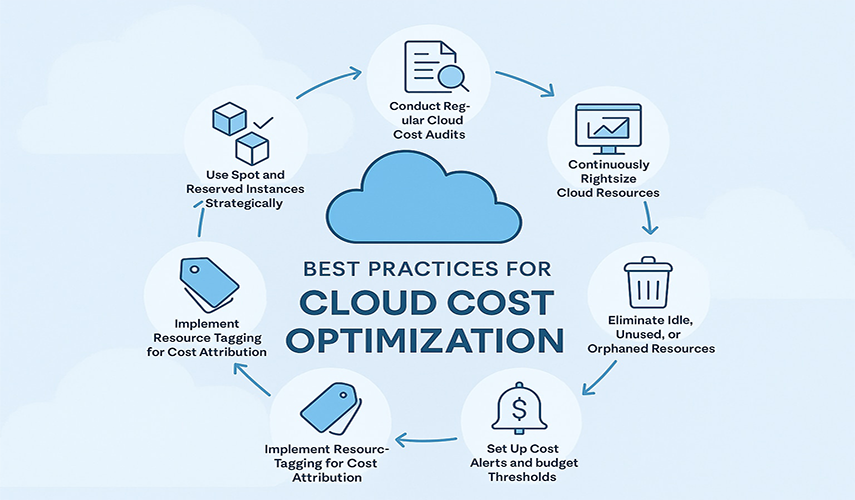
Optimize Cloud Costs
The best cloud provider for an organization depends on its specific needs, from technical requirements and budget to existing infrastructure. Here is a comparison of AWS, Azure, and Google Cloud based on key criteria as of 2025.
Key differentiators and ideal use cases
Amazon Web Services (AWS):
- Best for: Large-scale enterprises, global services, and complex, mission-critical applications that require the most mature and extensive ecosystem.
- Strengths: Most mature service portfolio, unmatched global reach, a comprehensive free tier for new users, and a massive ecosystem of third-party integrations.
- Weaknesses: Can be overwhelming for new users due to the sheer number of services. Pricing can also become complex.
Microsoft Azure:
- Best for: Enterprises with existing Microsoft investments, hybrid cloud solutions, and regulated industries.
- Strengths: Deep integration with Microsoft tools (e.g., Office 365, Active Directory), strong hybrid cloud capabilities via Azure Arc, and robust security features.
- Weaknesses: Some advanced services, particularly in AI/ML, are still catching up to the competition, though rapid progress is being made.
Google Cloud (GCP):
- Best for: Data-driven businesses, AI/ML-focused applications, and companies with a strong focus on open-source technologies.
- Strengths: Industry leader in data analytics and AI tools (BigQuery, Vertex AI), leadership in Kubernetes, and a user-friendly platform.
- Weaknesses: Smaller market share and a less mature enterprise ecosystem than AWS and Azure.
How to evaluate cloud providers for your business
To select the right cloud provider, consider the following approach:
- Assess your workloads: Match your specific needs with a provider's strengths. For example, if you are a data-heavy business, GCP is an excellent option.
- Consider your existing tech stack: If your organization relies heavily on Microsoft products, Azure may provide the smoothest integration.
- Run a cost analysis: Use each provider's pricing calculator to create a precise cost estimate for your planned architecture.
- Take advantage of free trials: Test each platform's free tier to evaluate its user-friendliness and suitability for your needs.
- Develop a multi-cloud strategy: Consider a multi-cloud approach to leverage the unique strengths of each provider and avoid vendor lock-in.
